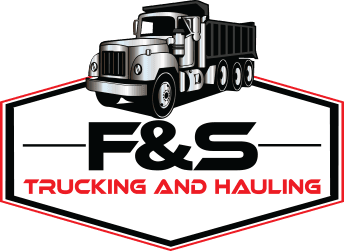In the world of heavy-duty transportation, the configuration of a truck's axles plays a critical role in its performance, load capacity, and maneuverability.
Among the various configurations, tri-axle and quad-axle trucks are common choices for transporting heavy loads. But what sets them apart?
Let’s dive into the key differences between these two types of trucks and see how F&S Trucking and Hauling can provide the right solutions for your needs.
Axle Configuration: The Basics
Before we delve into the specifics, it’s essential to understand what we mean by axles in this context. An axle refers to a central shaft for a rotating wheel or gear. In trucks, axles are crucial for supporting the vehicle's weight and the load it carries.
- Tri-Axle Trucks: These trucks have three axles, with one at the front (steering axle) and two at the rear (drive axles).
- Quad-Axle Trucks: These trucks have four axles, usually configured with one steering axle at the front and three drive axles at the rear.
Load Capacity and Weight Distribution
One of the primary differences between tri-axle and quad-axle trucks is their load capacity.
- Tri-Axle Trucks: Generally, these trucks can handle a load capacity of around 42,000 to 50,000 pounds. The two rear axles help in distributing the weight more evenly, which can be beneficial for certain types of loads and road conditions.
- Quad-Axle Trucks: With an additional axle, quad-axle trucks can carry heavier loads, often up to 60,000 pounds or more, depending on the specific regulations and truck design. The extra axle provides better weight distribution, which reduces the stress on individual axles and improves overall stability.
Maneuverability and Terrain Adaptability
The number of axles also influences how the truck handles and navigates different terrains.
- Tri-Axle Trucks: These trucks offer better maneuverability compared to their quad-axle counterparts. They are often preferred for urban and suburban routes where tighter turns and narrower streets are common. The slightly lighter weight also means they can sometimes be more fuel-efficient.
- Quad-Axle Trucks: While they may not be as nimble as tri-axle trucks, quad-axle trucks excel in stability and handling heavy loads over rough terrains. The additional axle helps distribute the load more evenly, making them suitable for construction sites, uneven roads, and longer hauls.
Cost Considerations
Cost is another significant factor when choosing between tri-axle and quad-axle trucks.
- Tri-Axle Trucks: Generally, tri-axle trucks are less expensive than quad-axle trucks. They have lower upfront costs, and maintenance can be slightly cheaper due to having fewer axles and associated components.
- Quad-Axle Trucks: These trucks come with a higher price tag due to the additional axle and the increased load capacity. However, for businesses that regularly transport heavy loads, the investment can be justified by the increased efficiency and capability.
Regulatory and Compliance Issues
Different regions have specific regulations concerning axle configurations and load limits.
- Tri-Axle Trucks: Often face fewer regulatory hurdles in terms of permissible weight on public roads, making them a versatile choice for various applications.
- Quad-Axle Trucks: While they can carry more weight, they are subject to stricter regulations and may require special permits, depending on the region and the load they carry.
Applications
The choice between a tri-axle and quad-axle truck often comes down to the specific needs of the job.
- Tri-Axle Trucks: Commonly used in construction, municipal services, and for transporting materials like gravel, sand, and asphalt. They are also popular for regional hauling where high maneuverability is required.
- Quad-Axle Trucks: Favored in industries requiring the transport of heavier materials, such as large construction projects, mining operations, and heavy equipment transportation. Their ability to handle larger loads makes them ideal for long-distance hauling and demanding jobs.
Meeting Your Trucking Needs
At F&S Trucking and Hauling, we understand that every transportation need is unique, which is why we offer a range of tri-axle and quad-axle trucks to suit various demands. Our fleet of trucks is the backbone of our reliability. Here’s how we can help:
Customized Solutions
Whether you need the maneuverability and cost-efficiency of a tri-axle truck or the heavy-duty capacity of a quad-axle truck, F&S Trucking and Hauling can provide customized solutions tailored to your specific requirements. Our fleet is equipped to handle a variety of loads, ensuring that your material is transported safely and efficiently.
Experienced Team
Our experienced team of drivers and logistics experts ensures that every job is executed with precision and care. We are well-versed in regulatory requirements and best practices, ensuring compliance and optimal performance in every project.
Reliability and Safety
At F&S Trucking and Hauling, safety and reliability are our top priorities. Our trucks are regularly maintained and inspected to ensure they meet the highest standards of safety and performance.
Contact Us
Ready to find the perfect trucking solution for your business? Contact F&S Trucking and Hauling today to learn more about our tri-axle and quad-axle trucks and how we can support your transportation needs! Whether you’re tackling a major construction project or need reliable regional hauling, we have the expertise and equipment to get the job done right.
Need construction materials hauled? F&S Trucking and Hauling delivers fast, reliable service. Call us today at 864-612-1722!


